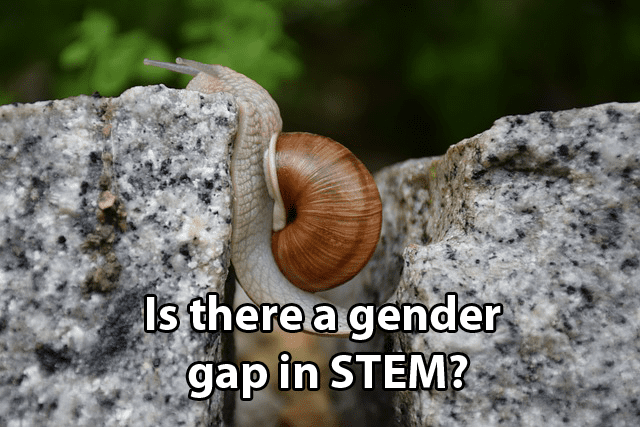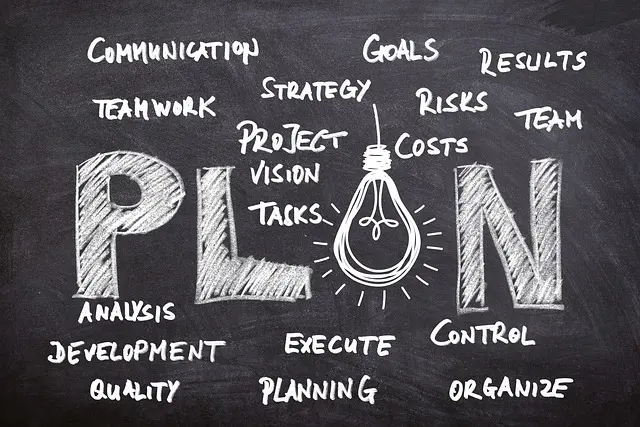
Gender disparities in STEM fields
There is a notable gender disparity within the STEM fields. Despite efforts to promote equality, women continue to be underrepresented and face various challenges in pursuing careers in science, technology, engineering, and mathematics. Numerous factors contribute to these disparities, including societal stereotypes, biases, educational barriers, and workplace challenges.
Stereotypes and biases play a significant role in perpetuating gender disparities in STEM. From a young age, girls are often subjected to the notion that they are not as capable in math and science as their male counterparts. These deeply ingrained stereotypes can discourage the pursuit of STEM subjects, leading to fewer women entering these fields. Additionally, biases in hiring and promotion processes further limit opportunities for women in STEM careers. These biases not only hinder professional growth but also contribute to a lack of diversity within the industry.
Factors contributing to gender disparities in STEM
Gender disparities in STEM fields can be attributed to a variety of factors. One key factor is the perpetuation of stereotypes and biases. Society often associates certain STEM fields, such as engineering and computer science, with masculinity, while portraying others, such as nursing and social work, as more suitable for women. These stereotypes not only discourage girls and women from pursuing STEM careers but also create a bias against them in academic and professional settings. Additionally, unconscious biases can lead to discrimination against women in hiring and promotion processes, further contributing to the gender gap in STEM.
Another factor that contributes to gender disparities in STEM is the presence of educational barriers faced by women. Despite significant progress in educational opportunities for women, they still encounter obstacles that hinder their advancement in STEM fields. Studies have shown that girls are often discouraged from taking math and science courses, either due to societal norms or inadequate educational support. As a result, there is a lack of representation of women in STEM fields at the college level, leading to a decreased pool of female candidates for careers in these areas. Furthermore, gender biases and stereotypes can adversely affect women’s performance and confidence in STEM subjects, hindering their progress and limiting their opportunities for success.
Stereotypes and biases in STEM
Stereotypes and biases in STEM exist as pervasive barriers that hinder gender equality in these fields. Women, in particular, face numerous preconceived notions about their abilities, interests, and suitability for STEM careers. The prevailing stereotype suggests that women are naturally more inclined towards humanities and social sciences rather than the logical and technical domains of STEM. This gender biased perception often leads to subconscious biases when it comes to hiring, promoting, and supporting women in STEM fields. Consequently, women face significant challenges in breaking through the glass ceiling and achieving equal representation in these disciplines.
Moreover, biases in STEM extend beyond limiting women’s access and opportunities. They also affect the perception and treatment of women who do pursue STEM careers. Biases can manifest in the form of dismissive attitudes, lack of support, and lower expectations for women in these fields. These biases create additional barriers for women, discouraging them from fully pursuing their ambitions in STEM and hindering their progress and growth. Addressing and dismantling these stereotypes and biases is crucial for creating an inclusive and equal environment where all individuals have equal opportunities to succeed and contribute to the advancement of STEM fields.
Educational barriers faced by women in STEM
When it comes to pursuing careers in STEM (science, technology, engineering, and mathematics), women often face various educational barriers. One significant barrier is the persistent gender stereotypes that paint STEM fields as more suitable for men. From a young age, girls are subtly steered towards non-STEM subjects, while boys are encouraged to explore and excel in these areas. This societal bias can lead to self-doubt among young girls and discourage them from pursuing educational paths that could lead to successful careers in STEM. These stereotypes need to be actively challenged and dismantled to create more opportunities for women in these fields.
Additionally, a lack of representation and role models contributes to the educational barriers faced by women in STEM. The underrepresentation of female scientists, engineers, and mathematicians in educational materials and curricula can limit young girls’ awareness and understanding of their potential in these fields. This lack of visibility can further perpetuate the notion that STEM is a male-dominated domain and dissuade women from pursuing coursework or degrees in these areas. To overcome this barrier, it is crucial to actively promote and highlight the achievements and contributions of women in STEM, providing aspiring female scientists with relatable role models and inspiration.
Workplace challenges for women in STEM
Workplace challenges for women in STEM can be a significant barrier to their success and advancement in these fields. One such challenge is the prevalence of gender bias and stereotyping. Despite progress in tackling gender disparities, many women in STEM still face discrimination and prejudice based on their gender. These biases can manifest in various ways, such as being overlooked for leadership positions or promotions, receiving lower salaries compared to their male counterparts, or facing skepticism and criticism of their abilities and expertise. Overcoming these biases and proving their competency often requires women in STEM to work harder and consistently prove themselves, creating an unfair and frustrating hurdle to navigate.
In addition to gender bias and stereotypes, another workplace challenge for women in STEM is the lack of representation and support networks. Women in these fields often find themselves in male-dominated environments, surrounded by a scarcity of female colleagues and mentors. This lack of representation can make it difficult for women to find relatable role models and mentors who can offer guidance and share experiences. It also leads to a sense of isolation and can create feelings of imposter syndrome, where women doubt their own abilities and feel like they do not belong in their respective fields. Consequently, establishing supportive networks and mentorship programs becomes crucial in providing the necessary guidance and encouragement for women in STEM to overcome these challenges and thrive in their careers.
The role of mentorship in closing the gender gap in STEM
Mentorship has been identified as a crucial factor in closing the gender gap in STEM fields. A mentor is someone who provides guidance, support, and advice to an individual, based on their own knowledge and experience. In STEM, mentorship plays an important role in encouraging and empowering women to pursue and succeed in these fields. By offering guidance and sharing their own experiences, mentors can help women navigate the challenges and barriers they may face, such as biases and stereotypes. Furthermore, mentors can provide valuable insights and opportunities, helping women expand their networks, build confidence, and access resources that can aid in their professional development.
The impact of mentorship in closing the gender gap in STEM goes beyond individual success stories. It also contributes to the creation of a more inclusive and diverse environment in these fields. When women have access to mentors who understand the unique challenges they face, they are more likely to feel supported and encouraged to stay in STEM careers. Mentorship can break down existing barriers and biases by fostering awareness and understanding. By witnessing successful female mentors, future generations of women in STEM can be inspired and motivated to pursue their passions, ultimately leading to a more balanced representation of genders in these fields.
Initiatives and programs to promote gender equality in STEM
To promote gender equality in STEM fields, numerous initiatives and programs have been developed that aim to address the existing disparities and create a more inclusive environment. One such initiative is the establishment of scholarship programs specifically targeting women in STEM. These programs provide financial support and opportunities to pursue higher education in STEM fields, thereby encouraging more women to pursue careers in these domains.
Furthermore, many organizations have launched mentoring and networking programs to support women in STEM. These initiatives pair experienced professionals with aspiring women in STEM, allowing them to benefit from guidance, advice, and learning opportunities. By providing access to role models and mentors who have successfully navigated the challenges of the field, these programs aim to inspire and empower women to excel in their STEM careers. Additionally, networking programs facilitate connections and collaborations among women in STEM, fostering a supportive community that can exchange knowledge and experiences.
Success stories of women in STEM
Success stories of women in STEM are abundant and continue to inspire and motivate future generations. One such remarkable success story is that of Dr. Marie Curie. Known for her groundbreaking research in radioactivity, Marie Curie became the first woman to win a Nobel Prize and the only person to win Nobel Prizes in multiple scientific fields – physics and chemistry. Her relentless pursuit of knowledge and sheer determination paved the way for women in the field of STEM, demonstrating that gender is not a barrier to scientific achievement.
Another remarkable success story is that of Dr. Hedy Lamarr, who is not only known for her iconic Hollywood career but also for her significant contributions to the field of wireless communication. Dr. Lamarr, along with her co-inventor, developed a groundbreaking frequency-hopping spread spectrum technology that laid the foundation for modern-day Wi-Fi, GPS, and Bluetooth. Despite facing numerous challenges and a lack of recognition during her lifetime, her perseverance and ingenuity have left a lasting legacy in the world of technology and continue to inspire women to pursue their dreams in STEM.
The importance of diversity in STEM fields
Diversity plays a crucial role in the fields of science, technology, engineering, and mathematics (STEM). Embracing a diverse workforce allows for a wide range of perspectives, experiences, and ideas, which in turn fosters innovation and creativity. When individuals from different backgrounds come together to tackle complex problems, a multitude of solutions can emerge, leading to groundbreaking advancements in STEM. Moreover, diversity in STEM fields ensures that all voices are heard and represented, enabling the development of technologies and solutions that benefit a broader range of people.
Inclusive environments that value diversity also attract a wider talent pool. By creating an atmosphere where individuals from all walks of life feel welcome and supported, organizations in STEM fields can tap into a wealth of untapped potential. When people from different genders, ethnicities, and backgrounds know that they can thrive and succeed in these fields, they are more likely to pursue STEM education and careers. This increased pool of diverse talent not only strengthens the STEM workforce but also paves the way for future generations, inspiring them to engage in STEM and contribute to the advancement of society.
Future prospects for closing the gender gap in STEM
Despite the ongoing gender disparities in STEM fields, there are encouraging future prospects for closing the gender gap. One promising factor is the increasing efforts to promote and foster diversity in STEM. Many academic institutions, organizations, and companies have recognized the importance of gender equality and have implemented various initiatives to support and encourage women in pursuing STEM careers. These initiatives include scholarships, mentorship programs, networking opportunities, and leadership development programs specifically designed for women in STEM. By providing these resources and opportunities, institutions are taking active steps towards closing the gender gap and creating a more inclusive and diverse STEM workforce.
Additionally, the growing visibility and representation of successful women in STEM serve as powerful role models for young girls and inspire them to pursue careers in these fields. Through highlighting the accomplishments and stories of women who have overcome barriers in STEM, we can challenge stereotypes and debunk the notion that STEM fields are exclusively for men. This increased visibility not only encourages girls to dream big and imagine themselves in STEM careers but also helps create a more supportive and accepting environment for women currently working in these fields. As more women break barriers and succeed in STEM, the realization of gender equality in these fields becomes more attainable for future generations.












